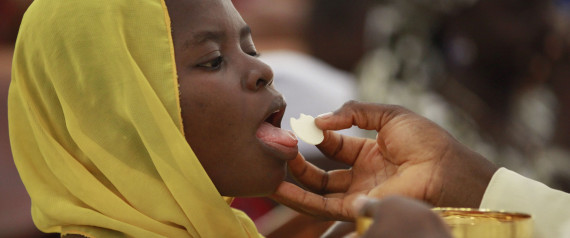Michelangelo Buonarotti (1475-1564), sculptor, painter, draughtsman, architect and poet, was one of the major figures of the Roman High Renaissance. He was acclaimed in his own lifetime as a genius. His working career spanned over 70 years. 'Christ and the Woman of Samaria' was made when he was about 65.
This picture shows the incident told in the Gospel of St John (Chapter IV, verses 5-26) where Christ met the Woman of Samaria drawing water at Jacob's well. Several oil versions of this subject are known, all of which are copies - either from the original by Michelangelo or from the well-known engraving of the picture made by Nicholas Beatrizet.
The choice of this biblical subject for a private devotional image, as this piece is believed to be, is unusual. The Woman of Samaria had already had five husbands and was living with another man who was not her husband. Jews did not normally talk to Samarians. It would seem that Samarians themselves did not normally talk to this woman. By singling her out for attention and making her the physical vehicle for carrying messages to the Samarians, Christ indicated most forcefully that he had come to save all humanity. This incident places particular emphasis upon grace and forgiveness.
A characteristic of Michelangelo's figure style that was much commented by his contemporaries was his so-called 'terribilitià' - a kind of awesome statuesque grandeur. Muscles are often exaggerated - bodies have a burly look and female figures have a proportion similar to those of males.
The picture is drawn in bistre ink onto gesso (plaster) ground. The ground is on a poplar panel and has warped into a curve over time.
This is a perplexing picture, principally because it is still unclear whether or not it is the original by Michelangelo. The Liverpool banker and author, William Roscoe, owned it during the early nineteenth century and believed it to be authentic. However, more recent scholarly opinion tended, until 1978, to regard it as a copy, possibly made from the print. The cleaning of the painting by conservators at the Courtauld Institute in London, revealed it to be of very high quality and it is now believed either to be by Michelangelo or to be the closest of the copies made after the picture.
The original picture is recorded as having been painted for Vittoria Colonna (1490-1547) at some time between 1536/8 and 1542. She was an extremely learned and devout woman from a prominent Roman family who attained an international reputation as a poetess and as a prominent advocate of church reform. She wished, like others, to find a middle way between the Catholic teaching on grace and Lutheran beliefs.
She wrote many sonnets, several in memory of her husband who had been killed at the Battle of Pavia. She was a close friend of Michelangelo and they corresponded with each other. He wrote several courtly sonnets praising both her physical and spiritual beauty, in addition to supplying her with other devotional images. There is a considerable amount of common imagery and ideas in the verse of Michelangelo and Vittoria Colonna. Both wrote in the style of Petrarch and both united Christian and Platonic beliefs.
Among those with whom Vittoria Colonna corresponded was the Marguerite of Angoulême, sister of Francis I, King of France, who also wrote poetry and was a prominent advocate of church reform. Her portrait is also on display at the Walker, or you can see it in our 13th-16th Century gallery online.



1 comment:
I, Paul, am already being poured out like a libation, and the time of my departure is at hand.
I have competed well; I have finished the race; I have kept the faith.
From now on the crown of righteousness awaits me, which the Lord, the just judge, will award to me on that day, and not only to me, but to all who have longed for his appearance.
The Lord stood by me and gave me strength, so that through me the proclamation might be completed
and all the Gentiles might hear it.
And I was rescued from the lion’s mouth.
The Lord will rescue me from every evil threat and will bring me safe to his heavenly Kingdom.
To him be glory forever and ever. Amen. (2 Timothy 4:6-8, 17-18)
Post a Comment